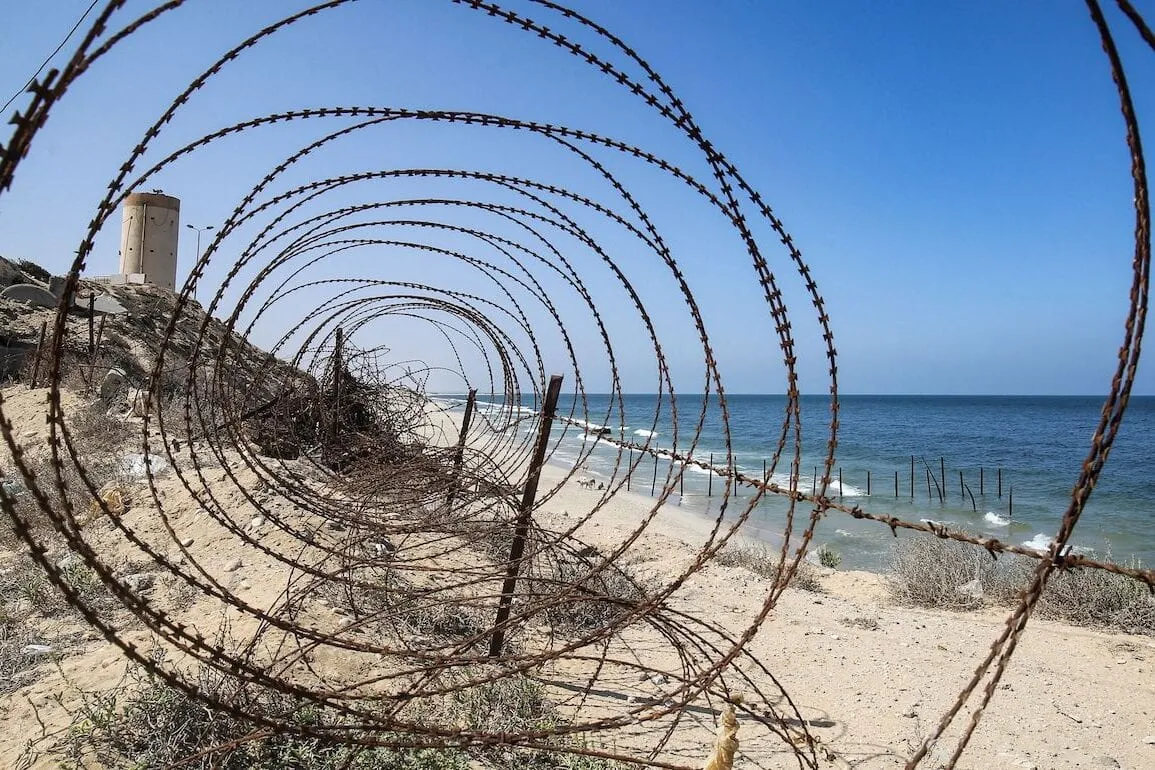Israel has been imposing its blockade on the Gaza Strip, West-Bank and Jerusalem since 2006 and for 16 years till the end of February, 2023 by all means and which is considered a flagrant violation against the International Law.
Israel’s airtight land, sea, and air blockade on two-million-resident Gaza since June 2007 has devastated its economy and led to what the UN has called the “de-development” of the territory, a process by which development is not merely hindered but reversed.
Gaza Siege Adversely Affects the Humanitarian Situation in the Gaza Strip
The humanitarian situation in the Gaza Strip is still very bad with the end of the Israeli blockade in its seventeenth year. By the end of February, 2023, Gaza blockade has caused the impoverishment of more than 61% of the population of the Strip, which is about 2.380 thousand people.
More than 60 percent of Palestinians in Gaza are refugees, expelled from their homes in other parts of Palestine in 1948, in places such as Lydda (Lod) and Ramle, and now live just a few kilometers away from their original homes and receiving humanitarian aid to live.
Obvious Deterioration in the Medical Sector in the Gaza Strip
There is an evident rise in the number of patients dying as a result of the delay or refusal of the Israeli authorities to grant them permits to exit through the Erez crossing for the purpose of having an urgent medication. Note that 8 patients from the Gaza Strip died because of this during 2022.
There is a significant deterioration in the health sector as a result of the Israeli blockade, with a shortage of basic medicines reaching about 40%, a shortage of medical consumables reaching 32%, and a 60% shortage in laboratory supplies and blood banks.
About 9,000 patients in Gaza are waiting for their suffering to end by providing them with the necessary treatment as the total number of cancer deaths in the Strip ranges between 750-800 annually.
Statistics of the Ministry of Health in Gaza indicated that the incidence of cancer in the Gaza Strip increased during the past six years till February, 2023 from 89 cases per 100,000 people to 9,103 cases per 100,000 people.
Israeli Blockade Affects the Economic Situation in the Gaza Strip
By the end of February, 2023, Israeli blockade has prevented about 47% of Palestinian participants in the labor force from working as approximately 53% of the population suffers from food insecurity.
The continuation of Israeli restrictions on the movement of people and goods to and from the Gaza Strip through the Erez and Kerem Shalom crossings, as the exit of individuals is mainly limited to humanitarian cases that obtain transit permits after a lengthy security check.
Meanwhile, the Israeli side continues to ban the entry of large numbers of people, important materials and equipment for the health, commercial and production sectors under security pretexts.
The Majority of Palestinians in the Gaza Strip and the West-Bank are Under Poverty Line
According to the fact that Gaza has been under a military occupation of more than 55 years, and this crisis has been exacerbated by the lack of commitment to international humanitarian law and international human rights law, the repeated aggressions on the Gaza Strip and the internal division.
The dangerous rise in poverty rates reached 80%, severe poverty reached 36%, and the unemployment rate reached 85%. UNRWA announced that 80% of the population in the Gaza Strip is totally dependent on humanitarian aid.
31 percent of Palestinians in the West Bank and 81 percent in Gaza face challenges in meeting basic essential needs, especially in accessing food, health and public utilities.
Till February 2023, reports showed that 8% of families in the West Bank and 73% of families in Gaza received humanitarian assistance during the six months preceding the collection of data related to the multisectoral needs analysis for the year 2022. Of these, 80% are women and 65% are in Gaza; Violence against women, especially at the hands of their husbands, remains alarmingly high.
Gaza Siege Also Affects Agricultural & fishing sector
Israel has been imposing a naval blockade too as the most affected by this blockade are the Gazan fishermen who are being fought by the occupation for their livelihood.
More than 3,500 Palestinian fishermen depend on fishing to put food on the table, in addition to a number of assistants, who support a total of more than 45,000 people who have no source of another income, which the Israeli occupation has intensively and deliberately targeted.
According to the signed agreements, fishermen should be allowed to sail a distance of 20 miles. The occupation forces reduced this distance to 6 miles, and after the 2008 aggression, shooting was a warning given to every fisherman who approaches a distance of 3 miles, and sometimes from a distance of 2 miles.
In recent years, the catch rate has recorded only 70 tons per month, and this greatly affects the fisherman’s income.
Because of the siege and wars that the Gaza Strip went through, about (85%) of the agricultural sector was destroyed, and throughout the years of the blockade, agricultural lands and crops were damaged due to the lack of water and the ban on entry of fertilizers and grains.
Several factors also contributed to the decline in the agricultural sector, and negatively affected many crops, especially citrus, which was a major source of economic income in the Strip.
Citrus trees used to cover more than 75 thousand dunums, but today they have decreased to 17 thousand dunums, due to the blockade, the salinity of water, and the cessation of export operations abroad.
Shortlink for this post: https://daysofpalestine.ps/?p=36705





